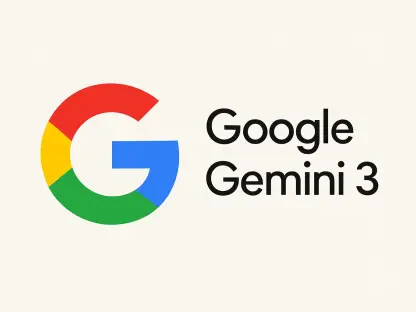As the digital landscape transforms at a breathtaking pace, a staggering shift is underway in how users discover information and interact with brands online, driven by the rapid rise of artificial intelligence and large language models (LLMs). No longer confined to traditional search engine results pages, discovery now spans a multitude of platforms where AI-generated answers are becoming the norm. Generative Engine Optimization (GEO) has emerged as a critical strategy for ensuring visibility in this new era of search. With research indicating that LLM traffic could eclipse conventional Google search by the end of 2027, and recent data showing an 800% year-over-year surge in LLM referrals, the urgency to adapt cannot be overstated. Brands that fail to pivot risk fading into obscurity amidst the millions of impressions generated by tools like Google AI Overviews. This article delves into the essentials of GEO, exploring its significance, its synergy with traditional SEO, and actionable steps to optimize content for AI-driven platforms, providing a roadmap to maintain relevance in an increasingly complex digital environment.
1. Understanding the Shift to GEO and AI-Driven Search
The advent of Generative Engine Optimization marks a pivotal moment in digital marketing, as it focuses on tailoring content to appear in AI-generated responses on platforms such as Google AI Overviews, ChatGPT, and Perplexity. Unlike traditional search optimization, GEO prioritizes visibility within conversational answers crafted by AI, rather than solely aiming for high rankings on search engine results pages. This shift reflects a broader trend where discovery is no longer limited to a single search engine but spans diverse channels where users seek trusted insights. The importance of this evolution is underscored by the sheer scale of AI adoption, with tools like ChatGPT amassing over 400 million weekly users and Google’s AI Overviews appearing in billions of monthly searches. For brands, adapting to this landscape is not optional but essential to avoid being sidelined in an environment where AI shapes user decisions.
Beyond the technical aspects, GEO represents a fundamental change in user behavior and expectation, driven by the immediacy and personalization of AI responses. Where traditional search often required users to sift through links, AI tools now deliver synthesized answers directly, often without the need for further clicks. This means that brands must not only be discoverable but also positioned as authoritative voices within these AI narratives. The rapid growth of AI traffic, projected to outpace conventional search within a few years, signals that the window to establish a presence in this space is narrowing. Early adoption of GEO strategies can provide a competitive edge, ensuring that content is not just seen but recommended by the algorithms that increasingly guide user choices.
2. Why GEO Is a Game-Changer for Visibility
Generative Engine Optimization stands out due to its holistic approach, encompassing content creation, strategic publishing in AI-accessible spaces, and earning positive brand mentions across the web, even without direct links. Technical accessibility remains a cornerstone, ensuring AI crawlers can easily parse and interpret content. The goal is to influence the conversational tone of AI responses, making a brand the go-to recommendation when users pose questions. This differs sharply from traditional search goals of securing clicks through top rankings. As AI tools prioritize delivering comprehensive answers within their outputs, shaping the narrative around a brand becomes paramount, especially when platforms like Google integrate AI summaries in over half of tracked keyword searches.
The urgency of embracing GEO is further highlighted by the evolving nature of information discovery, where success is no longer tied to a prominent spot on a results page but to being the preferred solution in AI dialogues. This shift demands a reevaluation of metrics, moving beyond traffic to focus on influence and visibility across touchpoints. The data paints a compelling picture: AI-generated summaries now impact a significant portion of search experiences, directly affecting how audiences perceive and engage with brands. Ignoring this trend risks invisibility in a landscape where AI engines are not just supplementary but central to user interactions, making GEO an indispensable tool for staying relevant.
3. Bridging GEO with Traditional SEO Practices
While Generative Engine Optimization introduces new challenges, it builds firmly on the bedrock of traditional SEO practices, leveraging elements like high-quality content creation, technical site optimization, and earning credible mentions online. Many of the principles that drive effective SEO—such as ensuring content is accessible to search engines and resonates with specific audiences—directly support GEO efforts. However, the integration of AI tools necessitates a broader perspective, where visibility extends beyond Google to include social platforms, forums, and AI-driven chat interfaces. This multi-surface approach redefines success as being discoverable across both search and conversational platforms, rather than just ranking for targeted keywords.
The evolving search landscape also calls for a cross-functional mindset, connecting SEO with broader business functions like product development, public relations, and social media strategy. Unlike the siloed approach of traditional SEO, GEO demands collaboration to amplify brand presence across diverse channels. While similarities with SEO are evident, key differences arise in how AI engines process and prioritize content, requiring updated tactics to track metrics like influence and conversions rather than mere traffic. This complementary relationship means that investments in solid SEO practices are not wasted but serve as a foundation for navigating the nuances of AI-driven discovery, ensuring brands remain visible in an increasingly fragmented digital space.
4. Step 1: Solidifying SEO Foundations for GEO
Embarking on a Generative Engine Optimization journey begins with mastering the essentials of traditional SEO, tailored to meet the demands of AI systems, ensuring that your digital presence is optimized for cutting-edge technology. Key technical aspects include ensuring a website is crawlable and indexable, allowing AI tools to access content effortlessly. Speed and mobile-friendliness are critical, as sluggish or incompatible sites diminish user experience and reduce the likelihood of being cited by AI. Security through HTTPS is non-negotiable, fostering trust with both users and algorithms, while server-side rendering helps overcome limitations some AI crawlers face with JavaScript. These fundamentals create a robust base for visibility in generative responses, aligning with broader SEO goals.
Equally important is establishing credibility through the E-E-A-T framework—Experience, Expertise, Authority, and Trust. Demonstrating real-world experience by sharing tangible results or firsthand insights enhances content value and builds a solid foundation for audience engagement. Expertise requires a deep dive into familiar topics, while authority can be bolstered by securing mentions or contributions on reputable platforms. Trust is built through transparent practices like authentic author bios, cited sources, and user testimonials. These elements not only appeal to human audiences but also signal to AI systems that a brand is a reliable source, increasing the chances of being referenced in generated answers and laying a strong groundwork for further GEO tactics.
5. Step 2: Amplifying Brand Presence Through Mentions
A critical component of GEO involves building a robust online presence through brand mentions and co-citations, as AI systems value unlinked references alongside traditional backlinks, making it essential to establish a strong digital footprint. Start by auditing existing mentions across Google, social media, and industry forums to gauge sentiment and visibility. This process reveals both positive and negative conversations, offering insights into areas needing attention. Testing brand recognition in AI tools like ChatGPT or Google’s AI Mode can uncover how these systems perceive and cite a brand, providing a benchmark for improvement. Such audits help strategize efforts to enhance online reputation in spaces frequented by AI algorithms.
Beyond auditing, proactive steps include securing mentions alongside competitors in comparison articles or industry roundups, reinforcing relevance to AI systems. Participation in sector-specific surveys or research studies adds credibility and often garners valuable citations. Engaging in online communities on platforms like Reddit or LinkedIn fosters authentic mentions, as contributing helpful insights can naturally elevate brand visibility. While traditional backlinks remain important, the focus on unlinked mentions and co-occurrences—where a brand is associated with key terms or peers—signals authority to AI, ensuring it is positioned as a trusted voice across diverse digital contexts.
6. Step 3: Diversifying Across Multiple Platforms
Adopting a multi-platform approach is no longer just a recommendation but a necessity in the age of generative AI, as AI tools frequently draw from sources beyond traditional search, including Reddit, YouTube, and social media. Establishing a presence on these platforms not only boosts engagement and brand awareness but also mitigates risks tied to reliance on a single algorithm. For instance, YouTube serves as a hub for tutorials and product reviews, making it ideal for content that addresses user problems. Similarly, short-form videos on TikTok and Instagram Reels can capture younger audiences who use these apps for search, enhancing discoverability through AI citations.
Further diversifying, platforms like Reddit offer opportunities to provide genuine value in niche communities, where helpful responses can lead to mentions in AI outputs. LinkedIn, particularly for B2B sectors, supports thought leadership through posts and discussions that AI systems may reference for expert insights. Podcasts are also emerging as a source for AI responses, with transcripts providing additional visibility. This strategic spread across channels ensures that a brand reaches audiences where they are most active, while simultaneously increasing the likelihood of being cited by generative engines, creating a resilient digital footprint that withstands algorithmic shifts.
7. Step 4: Investigating AI Citation Patterns in Your Niche
Understanding how AI platforms cite content within a specific industry is a powerful way to refine SEO strategies, starting with direct testing on tools like ChatGPT, Claude, and Perplexity. By posing relevant questions, it’s possible to observe which sources are referenced, whether competitors dominate responses, and which platforms are frequently cited. Noting the sentiment around brand mentions—both for a company and its rivals—offers clues on positioning. Manually varying question phrasing, such as asking for general recommendations versus niche-specific solutions, reveals how AI responses shift, highlighting gaps in content visibility that need addressing.
To scale this analysis, automated tools like Profound or Peec AI can run extensive prompts, mapping out citation patterns and competitive landscapes more efficiently. Even without such tools, manual testing provides a foundational understanding of where a brand stands in AI narratives. This process isn’t limited to large enterprises; small businesses, freelancers, and bloggers can also benefit by identifying local or service-specific citations in AI answers. Recognizing these patterns informs content creation, ensuring it aligns with the types of sources and formats AI prioritizes, ultimately boosting the chances of being included in generated responses across diverse user queries.
8. Step 5: Targeting Audience Queries with Precision
The nature of search is evolving with AI, as users increasingly rely on conversational, long-tail queries that differ markedly from traditional keyword-focused searches. Questions like “what to cook for dinner to lose weight” contrast with broader terms like “healthy meal prep ideas,” yielding varied AI responses that prioritize different content types. This trend toward detailed, natural language prompts presents a unique opportunity, as many brands have yet to create content addressing these specific inquiries. Capturing these long-tail queries can position a brand as the authoritative answer in AI outputs, especially in less competitive spaces.
Identifying the right questions to target starts with tapping into real user concerns, gathered from customer support interactions, sales conversations, or feedback channels. For those without direct customer data, platforms like Reddit, Quora, and industry forums serve as treasure troves of authentic queries reflecting how people articulate problems. Crafting content around these genuine questions ensures relevance to both human audiences and AI systems, which prioritize conversational alignment. By focusing on specificity, brands can carve out a niche in AI-driven search, enhancing visibility where broader, generic content often falls short in meeting nuanced user needs.
9. Step 6: Structuring Content for AI Compatibility
Creating content that resonates with generative engines requires a deliberate structure, as AI systems parse information into discrete chunks for analysis and citation. Keeping paragraphs concise and focused on a single idea prevents confusion, making it easier for algorithms to extract relevant points. Front-loading critical information ensures key messages aren’t buried in lengthy text, while clear headings and subheadings act as navigational aids for both AI and human readers. This logical organization mirrors strategies used for featured snippets but extends throughout the content, ensuring every section ties directly to its heading for coherence.
Additionally, complex topics benefit from being broken into numbered steps or digestible segments, with concise summaries that AI can readily use in responses. Including direct quotes or specific data points, such as statistics showing email marketing’s high ROI, can increase visibility in AI answers by up to 40%. Schema markup, like FAQ or HowTo formats, further aids machine understanding, while scannable formatting with selective bold text highlights essential facts. These practices not only cater to algorithmic preferences but also enhance user engagement, creating content that performs well across traditional and AI-driven search environments, ultimately driving better conversion outcomes.
10. Step 7: Measuring Visibility in AI Responses
Tracking a brand’s presence in AI-generated answers is a vital step in refining GEO efforts, starting with manual testing across platforms like ChatGPT, Perplexity, and Google AI Mode. Regularly posing relevant questions and documenting responses helps identify patterns in content citation and visibility shifts over time. However, manual methods have limitations in scalability and accuracy due to contextual variables like past user interactions. Despite these challenges, such testing offers a preliminary glimpse into how generative engines perceive a brand, serving as a starting point for deeper analysis.
For more robust insights, specialized tools like Semrush Enterprise AIO provide automated tracking of visibility across major AI platforms, offering competitive benchmarks and actionable recommendations. Alternatives like Ziptie.dev focus on uncovering unlinked mentions, while Semrush’s Organic Research report targets keywords in Google AI Overviews, revealing opportunities for optimization. These tools enable a comprehensive view of performance, helping to measure the impact of GEO strategies through metrics like mention frequency and context. Consistent monitoring ensures that efforts remain aligned with evolving AI priorities, allowing for timely adjustments to maintain or improve standing in generative search outputs.
11. Framing GEO for Stakeholder Buy-In
Communicating the value of Generative Engine Optimization to stakeholders requires a clear narrative that situates it within the broader context of search evolution, ensuring that its importance is understood in relation to ongoing digital trends. Emphasizing that traditional SEO continues to deliver results reassures decision-makers that past investments retain value. However, it’s crucial to highlight that the threshold for visibility has risen, demanding a presence across multiple channels beyond rankings. GEO offers a structured framework to articulate these shifts, presenting it as a strategic enhancement rather than a replacement for existing efforts, ensuring alignment with long-term business goals.
Further, discussions should focus on how GEO addresses the need for trust and citations in AI-driven environments, where being mentioned and recommended holds greater weight than ever. This approach helps stakeholders understand the necessity of adapting to a landscape where influence and conversions are key performance indicators. By positioning GEO as a forward-thinking solution, it becomes easier to secure support for integrating these practices into broader marketing strategies. This clarity fosters confidence that the organization is not just keeping pace but staying ahead of trends that redefine how audiences discover and engage with brands.
12. Taking Action in a Rapidly Evolving Landscape
Reflecting on the journey through GEO, it’s evident that the swift integration of AI into search demanded immediate attention from brands aiming to remain visible. The steps taken to adapt—from solidifying SEO basics to tracking AI visibility—proved essential in navigating a landscape where discovery spanned beyond traditional boundaries. Looking back, the urgency to benchmark progress and seize early opportunities shaped how effectively brands positioned themselves in generative responses, setting a precedent for resilience amid constant change.
Moving forward, the focus should shift to actionable next steps, such as consistently blending GEO with existing SEO efforts to prioritize content that AI engines favor. Exploring additional resources, like expert videos on changing search habits, offers deeper insights into building a multi-channel presence. The commitment to monitoring and refining strategies ensures that past efforts build a foundation for future success, encouraging a proactive stance in identifying emerging platforms and trends. By embracing these solutions, the path is cleared for sustained relevance in an AI-driven digital world, paving the way for innovative approaches to visibility and engagement.









